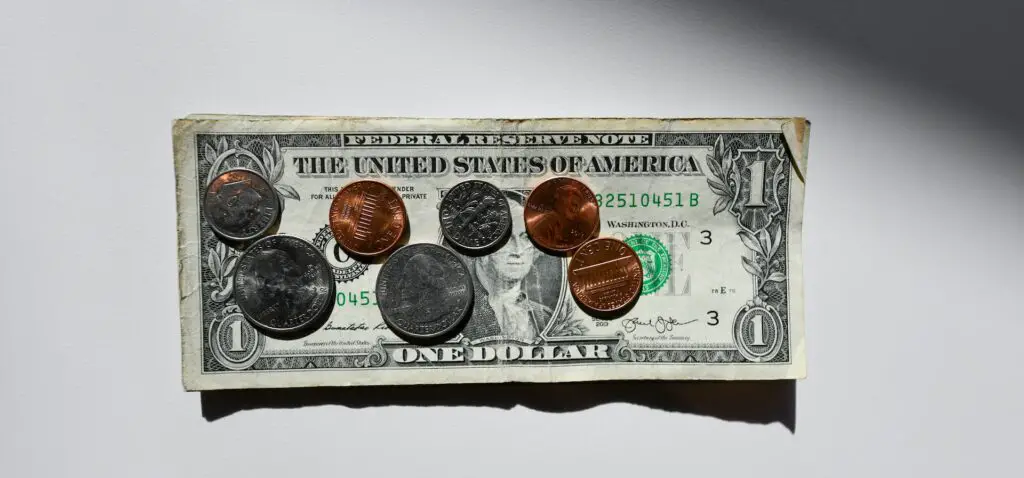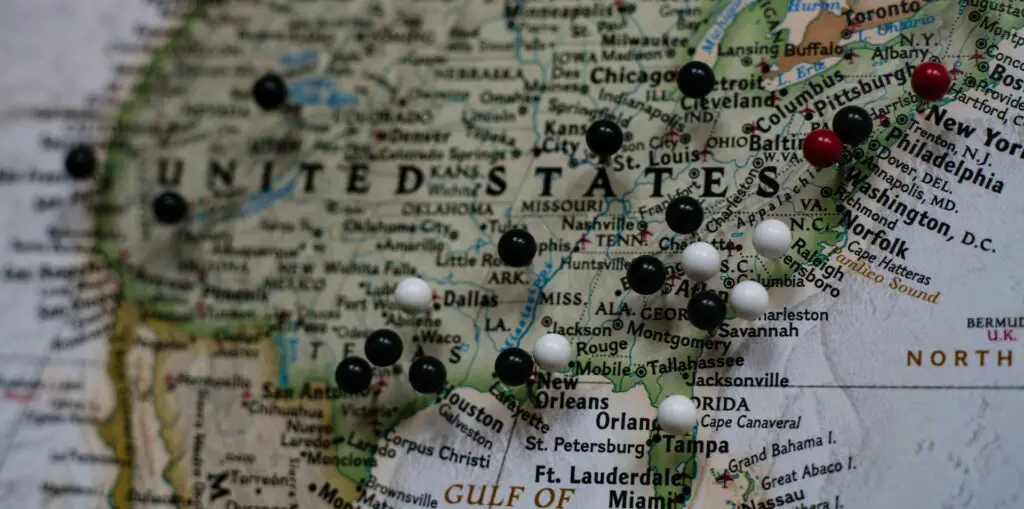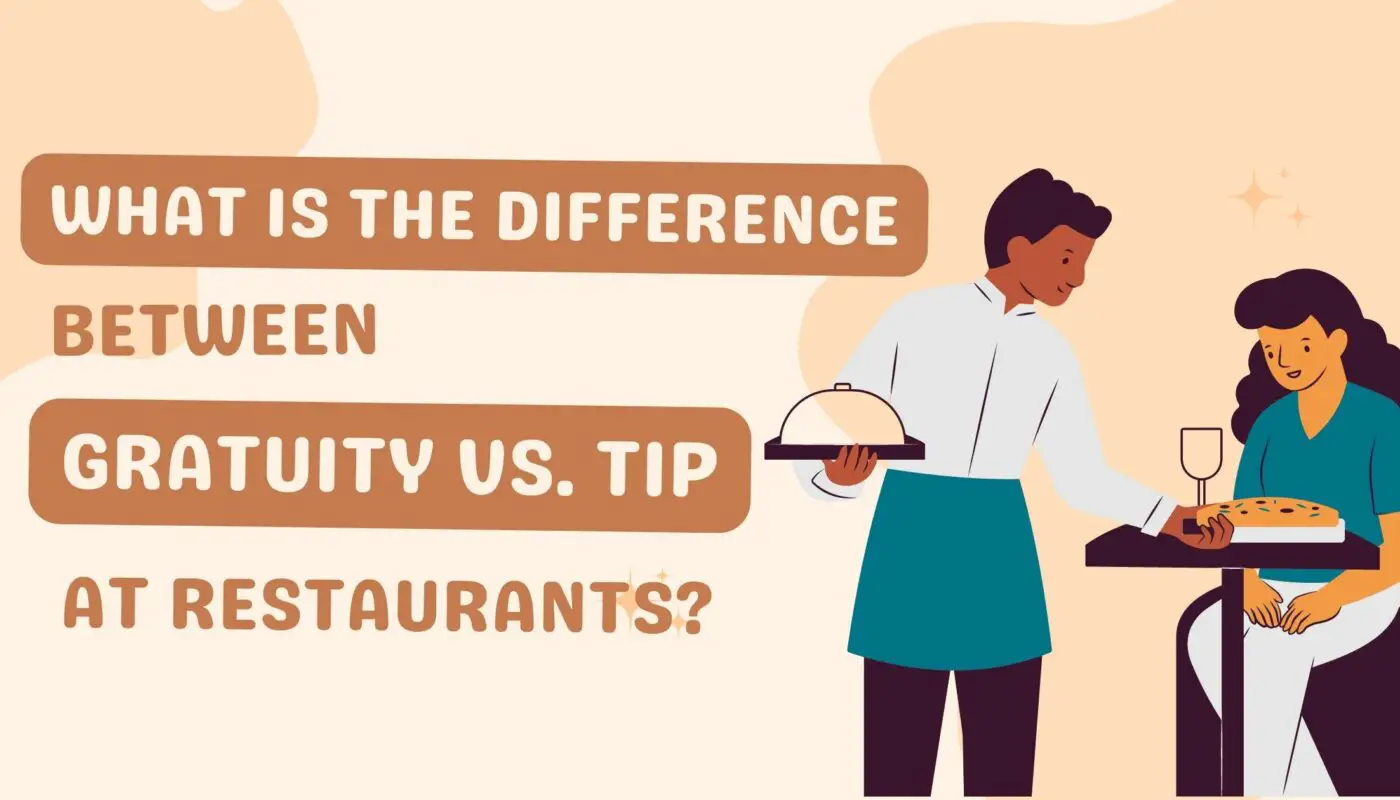Tourists and non-natives often find these customs and practices of gratuity and tipping to be stressful and confusing experiences.
In this article, we’ll explore and help you better understand the differences between gratuity and tipping in restaurants along with the history behind each practice. This article will prepare you to know the when, what, and how of tipping and gratuity.
What Is The Difference Between Gratuity vs. Tip At Restaurants?

Gratuity and tipping are more alike than they are different. Gratuity is more or less a mandatory fee that’s added directly to your bill. On the other hand, a tip is a completely voluntary payment that is paid directly to the server.
To ensure that you aren’t overpaying for underpaying, let us take a look at the underlying differences between gratuity and tipping in the USA.
| Parameters | Gratuity | Tipping |
| Payment Expectation | Gratuity is more or less a mandatory fee that’s added directly to your bill. | A tip is a completely voluntary payment that is paid directly to the server. |
| Expected Amount | Gratuity is often a percentage of your bill. It can be anywhere from 15% to 35%. | There’s no set amount for a tip as it is completely up to the guest. You can pay as you please, based on the service. |
| Time of Payment | Gratuity is paid along with the bill as it is included in the bill. | The tip is provided at the end of a service, and it is up to the customer’s discretion. |
| Type of Service | Gratuity is more closely associated with the restaurant industry. The most common place where you may have to pay gratuity is a restaurant. | Tipping is associated with a more wide range of services. One can tip anyone who provides them with any form of service such as a restaurant waiter, bellhop, valet, delivery driver, etc. |
| Legal Obligation | In some cases, you might be legally obliged to pay gratuity. | Tipping is completely voluntary. You don’t have any legal obligation to tip someone. |
What Is Gratuity In The USA?
In simple terms, gratuity refers to a certain amount of money that is given out voluntarily in order to show appreciation for services provided. Gratuity isn’t just limited to restaurants, fast-food workers, or delivery drivers. It can be given to anyone providing you with a service that’s worth rewarding.
However, gratuity is most commonly associated with the restaurant industry.
We can think of Gratuity as a mark of respect or a token of appreciation for a job well done.
It’s additional monetary compensation to showcase that you were happy or satisfied with the services provided to you.
Gratuity is not mandatory or compulsory, rather it is a choice.
Think of it as a discretionary payment that you are willingly making, on your own accord, to show your appreciation for the service provided.
However, these days gratuity is often listed on the restaurant bill which does take away the whole willing showcase of appreciation aspect of it. But this wasn’t always the case. Let us look at where it all started.
History of Gratuity in The US
In spite of their nuanced differences, gratuity and tip are often used as interchangeable terms. There’s a long history of gratuity in the United States.
The origin of the custom of expressing your gratitude with money is believed to have originated sometime in the late 19th century. It all began when wealthy Americans brought the practice of paying gratuities to the servers back from their travels to Europe.
Ever since then tipping your servers and paying gratuity has become a big part of American culture. Today, gratuity is not only a voluntary show of appreciation but also an important part of compensation for many workers in the service industry.
The daily wages of restaurant workers today all account for gratuities, making it a big part of their take-home pay.
How Does Gratuity Work in Restaurants?

While eating at a restaurant, the gratuity is typically added to the bill. More often than not, it amounts to a certain percentage of the total meal cost. This can range anywhere from 15% to 35%. The percentage depends on various factors.
These factors could include the location of the restaurant, the type of restaurant (fine-dining vs fast casual), the number of diners at the table, order value, etc.
Since gratuity is added to the bill itself, in some cases, customers may also have the additional option of adding a tip.
While traditionally gratuity would be paid in cash directly to the server, today it’s common to include it in your total bill. This makes it easier for people using their credit card or mobile payment app to pay the bill.
Also, contrary to popular belief, gratuity often does not go to the server attending your table.
Instead, in many restaurants gratuity is evenly split between the front-of-the-house (FOH) and back-of-the-house (BOH) staff.
In some cases, the entire gratuity amount goes directly to the restaurant.
Gratuity, like tipping, is voluntary. As such, a customer has every right to not pay gratuity if they weren’t satisfied with the quality of the service provided.
However, it is generally considered polite and socially right to pay gratuity.
When and How Much Gratuity Should You Pay?
You would pay gratuity in situations where you are provided with a service. Gratuity as a term is however mostly associated with the restaurant and hospitality industry. Generally, the standard expected amount for gratuity at a restaurant is around 15% to 20%.
Different locations and restaurants have different rules regarding gratuity.
Some might even charge you a ‘service tax’ which is just another name for gratuity. So to avoid overpaying for underpaying, make sure you do your research or ask your server.
The gratuity amount can also vary depending on different factors such as the location, type of service, quality of service, etc.
The gratuity amount can go up to 35% or even 50%. The amount of gratuity you need to pay depends only and only on you. However, if you are dining with a large group, then the restaurant may levy a default service charge on your bill.
Who Does The Gratuity Go To? How Is It Distributed?
Ideally, the gratuity you pay should go to your server. However, different restaurants have different policies regarding the distribution of gratuity. In most cases, if the gratuity is added to your bill by default, it would be evenly split among the restaurant staff.
While this allows everyone to get an equal share, it might be unfair to your server, which is where a tip comes into play.
In certain rare cases, the gratuity can also go to the restaurant for its operational costs. This is generally something that turns guests away from paying gratuity and is often looked down upon.
Today, many places are doing away with gratuity in exchange for a service charge or a convenience fee.
This is usually around 20% of your total bill and unlike gratuity, it goes directly to the restaurant.
Many restaurant-goers have voiced their disregard for this new change.
What is Tipping in The USA?

Tipping or the act of giving a monetary tip is a fairly common practice in the United States. It is considered to be a polite, customary act to leave a bit of extra money as a show of appreciation for good service. Tipping is mostly seen in a restaurant setting.
This is where the customer or guest usually tips their server a percentage of their total bill. This tip goes directly to their server and it makes up a big chunk of their take-home pay.
Other than restaurant servers, other people who work in the service industry, such as bartenders, valets, hairdressers, and more may also expect a tip.
While tipping is a big part of and majorly associated with the service industry, it is however not limited by it.
There are many other social scenarios and situations where one might be expected to leave a tip.
It is by no means mandatory to leave a tip. However, tipping is an expected and widely accepted social norm across the service and hospitality industry in the US.
The primary reason behind tipping being such an integral part of the US culture is the fact that a significant portion of the server’s income comes from tips.
The federal government classifies minimum wage workers as tipped minimum wage workers and regular minimum wage workers. And, as per federal minimum wage laws, the federal minimum wage for workers that receive a tip is lower than the regular minimum wage.
This means that restaurant owners can get away by paying comparatively lower wages to their servers.
The servers are in turn expected to compensate for this with the help of the tips they receive, making it extremely crucial for them. Tips essentially help servers earn a minimum liveable wage.
In today’s world, tipping is a huge part of the US culture. It’s more than just a token of your appreciation.
Tipping is seen as a way of ensuring that service industry workers are fairly compensated.
However, in recent years many people have also considered tipping to be a bad practice, as it favors the restaurant owners more than the workers.
How Does Tipping Work in American Restaurants?
If you are traveling to the US, remember that it is customary to leave a tip. This tip can be between 15-20% of your total bill. The exact percentage of your tip can vary based on various factors. It mainly depends on things such as the level of service provided.
It can also depend on the city you are in, the type of meal you had, and more.
How and When To Tip At Restaurants?
The way you tip also depends on where you are dining. For instance, if you are at a fast food place such as Subway, you can leave your tip in the tip jar, which is usually placed on the billing counter.
On the other hand, when you eat out at a fast-casual or a sit-down place, you can tip your server at the end of your meal. The bill usually has an additional place where you can manually enter the tip amount.
This amount is then added to your bill. This makes it easier to leave a tip when you are paying by card or mobile payment app.
You can also leave a cash tip by leaving the money on your table, or by handing it directly to your server.
Tipping in The USA vs the Rest of The World

While tipping at restaurants is seen as the norm and a part of the social etiquette in the US, it is often an alien concept for tourists. Travelers that visit the US for the first time are more often than not left puzzled and confused when it comes to tipping.
This is because outside of the US, it is really hard to come across a place that has such a strong tipping culture.
At most, one can find parts of Europe where a service charge, akin to gratuity, is included as a part of the bill.
However, to tip you, your server is seen as a very out-of-the-ordinary thing to do. In fact, in countries such as Japan tipping is seen as a very negative, even insulting act.
This often can lead to a lot of confusing awkward moments for tourists.
Conclusion
To conclude, even though both the terms “gratuity” and “tip” can be and are often used interchangeably, they aren’t the same. There are some important differences between the two and understanding them can help you maintain proper social etiquette.
Gratuity is usually a mandatory fee directly added to your bill, while a tip is a voluntary payment made directly to the server.
By better understanding, each of these concepts, and their differences, customers and travelers can make informed decisions about how they choose to reward their servers for their hard work and service.





![Priceline Pricebreaker Review - Priceline Pricebreaker Exposed! [Scam ALERT]](https://traveloons.com/wp-content/uploads/2023/03/Priceline-Pricebreaker-Review-Priceline-Pricebreaker-Exposed-Scam-ALERT-445x265.jpg)


